The AIG Council resolved in 2015 to support the development go technical specialist groups within AIG, to better support members with particular interests.
A proposal has been received to establish a QGIS Specialist Group, to provide a forum and network for members using QGIS software for geoscientifie mapping. This, more by luck than design, coincides with several QGIS workshops either recently or in the next few weeks, convened by several AIG state branches.
Interested?
Send an email to Mike Erceg, or leave a post on this page, expressing interest, how you use QGIS and what you think a specialist group within AIG could do for you.
Other specialist group proposals are at an early stage of development and proposals from members are welcome.
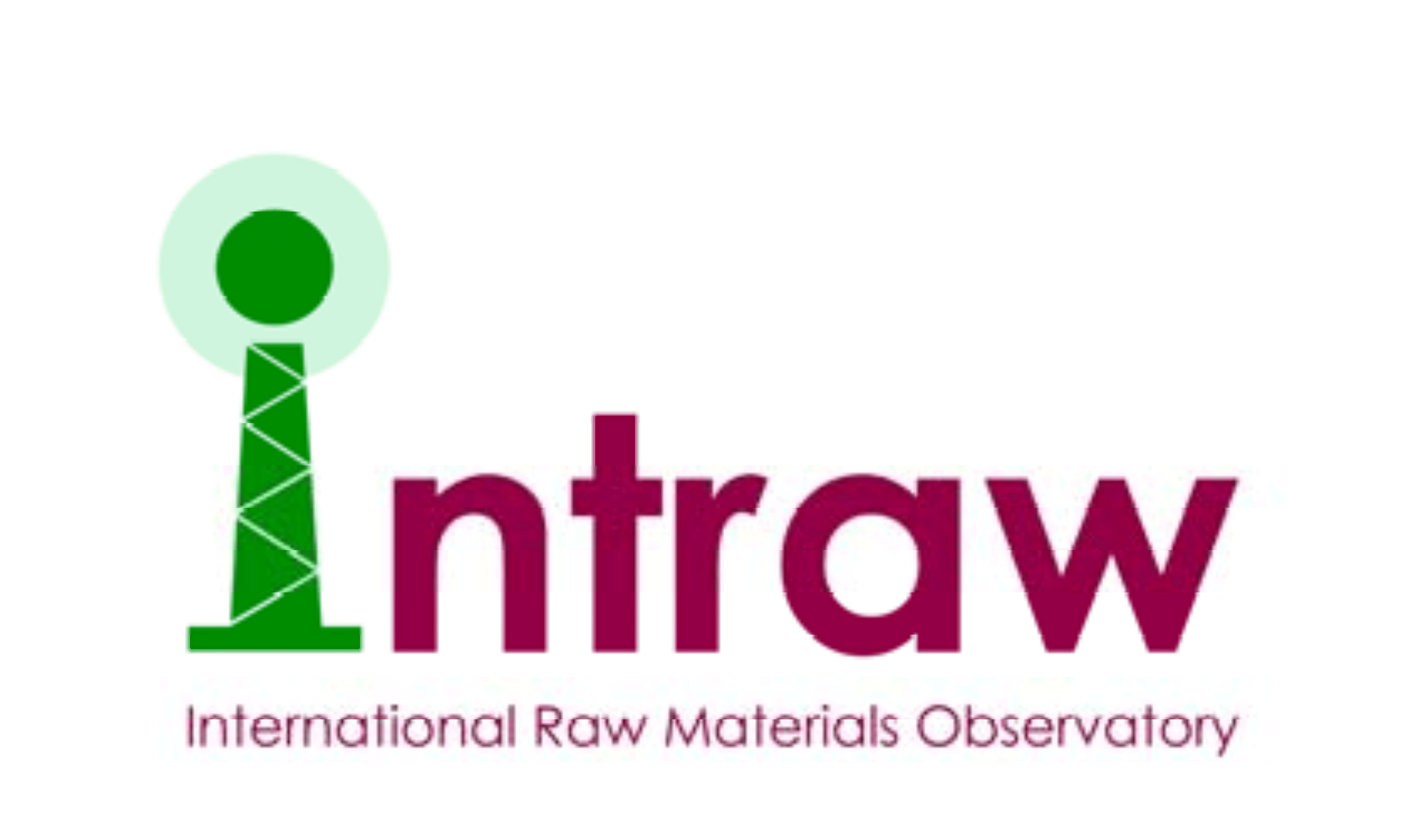
PRESS RELEASE | BRUSSELS | OCTOBER 2016 – The experts involved in the EU-funded INTRAW project gathered in Cornwall (UK) from 5 to 7 October 2016 for their second workshop in order to provide the project consortium with suggestions on how to enhance the European Union’s International Observatory for Raw Materials that will be launched by the end of the project’s lifetime.
The EU-funded INTRAW project started in early 2015 with the aim of mapping best practices and boosting cooperation opportunities related to raw materials between the EU and five technologically advanced non?EU countries (Australia, Canada, Japan, South Africa and the United States). Each of these five countries is subject to similar global challenges and they are considered as the project’s “Reference Countries”. The outcome of the mapping and knowledge transfer activities are used as a baseline to set up and launch the European Union’s International Observatory for Raw Materials as a definitive raw materials knowledge management infrastructure. The Observatory will be a permanent international body that will remain operational after the end of the project aiming at the establishment and maintenance of strong long?term relationships with the world’s key players in raw materials technology and scientific developments. INTRAW will thus play a key role in the alignment of the Research and Innovation (R&I) activities among the EU countries, boosting synergies with international research and innovation programmes, and reinforcing the European role and scientific capabilities for the sustainable access and supply of non-agricultural and non-energy raw materials fully in line with major raw materials policy initiatives such as Europe 2020, the Raw Materials Initiative and the Strategic Implementation Plan of the European Innovation Partnership on Raw Materials.
The representatives of INTRAW’s Joint Panels of Experts met in Falmouth, Cornwall, from 5 to 7 October 2016 in order to validate reports prepared by the project consortium that focus on Raw materials research & Innovation, Education & Outreach and Industry & Trade in the five Reference Countries. These three reports underpin the development of a better understanding of the achievements made in the five countries in relation to the entire raw materials value chain and will be presented to the public by the end of 2016. Moreover, the experts also provided precious input on the development of the business model of the International Observatory for Raw Materials. The workshop closed with a visit to the Geevor and Botallack tin mines, which are part of the UNESCO world heritage.
INTRAW is funded under the European Commission’s Horizon 2020 Programme for Research & Innovation (R&I) for a period of 36 months (February 2015 – January 2018). Under the coordination of the European Federation of Geologists (EFG) INTRAW brings together an international consortium of 15 partners with extensive experience in research, innovation, education, industry, trade and international networking across the entire raw materials value chain.
This project has received funding from the European Union’s Horizon 2020 research and innovation programme under grant agreement n° 642130. ![]()
See http://intraw.eu for further information.
CONTACT
Coordinator – European Federation of Geologists (EFG)
Vítor Correia, President efg.president@eurogeologists.eu
Isabel Fernández Fuentes, Executive Director isabel.fernandez@eurogeologists.eu
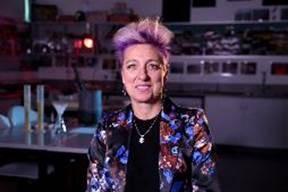 AIG’s WA Branch Chair Suzy Urbaniak and Perth’s Kent Street Senior High School were announced as recipients of the Prime Minister’s Prize for Excellence in Science Teaching for 2016 in Canberra last night!
AIG’s WA Branch Chair Suzy Urbaniak and Perth’s Kent Street Senior High School were announced as recipients of the Prime Minister’s Prize for Excellence in Science Teaching for 2016 in Canberra last night!
Suzy will share this year’s Prime Minister’s Prize for Excellence in Science Teaching in Secondary Schools with her school Kent Street Senior High School in Perth.
The prizes will be presented last night by the Prime Minister, the Hon Malcolm Turnbull, at a dinner in the Great Hall at Parliament House, Canberra.
Suzy is one of seven prize winners for 2016. They are:
The Prime Minister’s Science Prizes for Science were introduced in 2000. The prizes are awarded annually and are a public recognition and tribute to the contributions that our scientists, innovators and science teachers are making to Australia’s current and future scientific and commercialisation capabilities.
Suzy’s prize recognises:
Congratulations Suzy!

Two AIG members have got together to launch GeoPub in Belo Horizonte, Brazil!
The first GeoPub Belo Horizonte will be held on November 24th at Choperia Pinguim. The GeoPub monthly meeting is an opportunity for geoscientists living, working in or visiting the Belo Horizonte area to catch up on community news, have a few drinks, talk technical and/or generally socialise.
For this first meeting, we have invited exploration geologist Eugenio Espada, experienced in Au/Cu deposits, to present the short talk “Magmatic-hydrothermal Au±Cu±Mo deposits: classifications, confusions and implications”. The short talk will be held between 7:30 pm and 8:00 pm.
We hope you can attend the first GeoPub Belo Horizonte and feel free to invite any geoscientist colleague to join us there.
Warm regards, Francisco Abreu and Mario Reinhardt
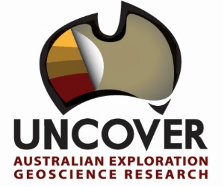 ‘Next generation’ of hidden mineral deposits essential to Australia’s continued prosperity and resource security: Governments urged to invest in world-first initiative
‘Next generation’ of hidden mineral deposits essential to Australia’s continued prosperity and resource security: Governments urged to invest in world-first initiativeAustralia’s Federal and State governments have a ‘once in a lifetime’ opportunity to invest in a world-first initiative to find the ‘next generation’ of hidden mineral deposits in Australia to sustain Australia’s high level of economic prosperity and resource security, the peak body for Australia’s 8000 geoscientists has urged.
The President of the Australian Geoscience Council (AGC), Dr Bill Shaw, said “the UNCOVER initiative — which has brought together government geoscience agencies, industry and research bodies in a unique collaboration — is already kicking goals in initiating and fast-tracking much-needed geoscience research, geological data collection and new exploration technologies to find ‘hidden’ mineral deposits”.
Dr Shaw warned, however, that significant increased and sustained long-term investment is needed now to ensure UNCOVER can deliver to its full potential.
Dr Shaw added that “investment in UNCOVER would enable Australia to stake its claim in the ‘next generation’ global mining boom, at a time when other countries are already acting to win more of the global exploration and production pie in many commodities, including those that will be needed for the production, storage and transmission of renewable energy”.
“The new high-quality mineral resource deposits needed to underpin Australia’s future wealth and resource security are currently largely hidden from us when using the existing surface-based exploration techniques…and without a step-change in new exploration technology and data acquisition they may never be located” Dr Shaw said.
“As we are exhausting our existing mines much more rapidly than we are finding new ones, it is critical that we find substantial new, quality, economic mineral deposits within 10 years. This is particularly crucial due to the long lead-time involved in large project development and turning new discoveries into revenue generating mining operations.”
“Failure to develop new major mines will have a huge impact on Australia’s resource security, economic prosperity, and high standard of living. As more and more of these new mineral deposits will be at depth, rather than found near the surface, new deep-mining techniques will also be required that are more efficient and socially acceptable. “Importantly, we don’t just need to find more of the ‘traditional’ minerals that have met society’s needs to-date — we must have the knowledge-base to help us explore successfully for whatever minerals our economy and export industries will need in the future. “In short, a step-change in the exploration approach will help us find ‘hidden’ deposits more quickly, to enhance our competitiveness. Australia cannot simply wait until production levels fall — the time to get into the ‘new search space’ is now. “That’s where the UNCOVER initiative comes in. “A global success story, UNCOVER’s whole-of-sector approach is already delivering significant results, filling the gaps in current geoscience research, exploration technology development, and new data acquisition and compilation work.
“AMIRA International, working with UNCOVER, has already developed Stage 1 of a science and technology Roadmap to get Australia from where we are currently to where we need to be in terms of finding new resource deposits, and it has been enormously successful in bringing together key stakeholders to start developing the required technology and geological datasets in the best possible timeframe” Dr Shaw said.
“Stage 2 of the Roadmap, again being undertaken by AMIRA International, is currently underway with wideranging support from industry, including exploration and mining companies, exploration and mining service providers, industry advocacy bodies, research organisations and the Federal, State and Territory geological surveys. “The AGC is urging the broader geoscience community to get involved with this next stage of the program, by contacting AMIRA International. “But UNCOVER’s future success will depend significantly on close engagement and ongoing investment by Australia’s Federal and State governments.
“We need to ensure that our all branches of government understand that UNCOVER will generate a much bigger (by orders of magnitude) return on investment to Australia’s taxpayers than the investment it requires.
“UNCOVER is not about putting forward a business case to help the mining and exploration industry — it is about sustaining and further building a strong future economy, and resource security, for Australia. As such, it is a business case for the future of Australia.
“Numerous other countries (like Canada, Brazil, India and Chile) have already realised that investing in ‘next era’ exploration research and geological data acquisition is a direct investment in their future wealth and resource security. “They have realised that big mining companies will vote with their feet and go where research and policy is most conducive to finding new resources most effectively and efficiently. “That these countries are putting significant funds into exploration geoscience research without demanding that industry matches those funds, is a clear indication that they understand this is an investment in their country’s economic future and not in the mining industry itself.
“We certainly appreciate the initial seed-funding that Federal and State government agencies have so far put into UNCOVER and the AMIRA Roadmap. “We hope the governments themselves will now reflect on the progress that UNCOVER is already making on behalf of Australia, and recognise the significant return that a more substantial investment in UNCOVER would deliver to Australia. “It would be great to see our governments getting right behind this great Australian success story at this critical juncture so our geoscientists can help secure Australia’s future prosperity.”
More information on UNCOVER can be found at www.uncoverminerals.org.au.
The National Centre for Groundwater Research and Training and International Association of Hydrogeologists are pleased to have Dr. Rebecca Nelson as the 2016 NCGRT / IAH Distinguished Lecturer.
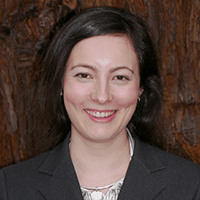
Dr Rebecca Nelson is a Fellow (Non-Resident) of the Stanford Woods Institute for the Environment and a Senior Fellow of the Melbourne Law School, where she teaches water law.
Dr. Nelson will tour every state and territory in Australia to deliver her lecture entitled: Regulating the cumulative impacts of groundwater withdrawals: Australia and further afield.
Abstract: The regulation of groundwater extraction has shifted dramatically through an intense era of intense water reforms spanning three decades. A key outstanding issue is controlling withdrawals with an eye to their cumulative impacts on groundwater resources and dependent systems. Such control is complicated not just by the incremental additive effects of many small withdrawals, but also by interactive and synergistic effects. This complexity is intensified further by data paucity, potentially significant time lags, and simultaneous background changes to natural systems, such as those caused by climate change.
Read the full abstract here.
AUSTRALIAN DATES:
Melbourne: 18 October
Hobart: 20 October
Perth: 26 October
Townsville: 2 November
Brisbane: 3 November
Canberra: 10 November
Sydney: 10 November
Adelaide: 30 November
Darwin: 1 December
Click here to register via the NGCRT website.
Dr Wilson’s biography is available here.
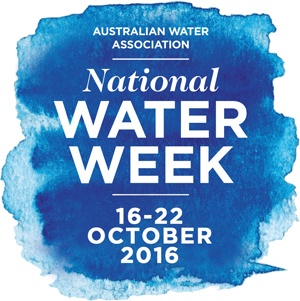
What is National Water Week?
Each year, National Water Week makes a splash across Australia inspiring individuals, communities and organisations to work together to build community awareness and understanding around water issues and opportunities for growth and innovation. This year’s National Water week’s theme is ‘Water – life – growth’ encouraging sound water practices and investment in all the water sources to ensure we don’t exhaust our current sources in potentially challenging times ahead.
National Water Week provides an opportunity to remind ourselves and teach others that water must be used wisely if there is to be enough to meet the needs of our future generations. While the week is dedicated to encouraging communities to take action to protect our vital water sources, it’s also a celebration of innovation and water achievements that have and will contribute to Australia’s sustainable future and economic prosperity.
Further information about this year’s national water week, events, teaching resources and past National Water Week themes is available from the Australian Water Association website.
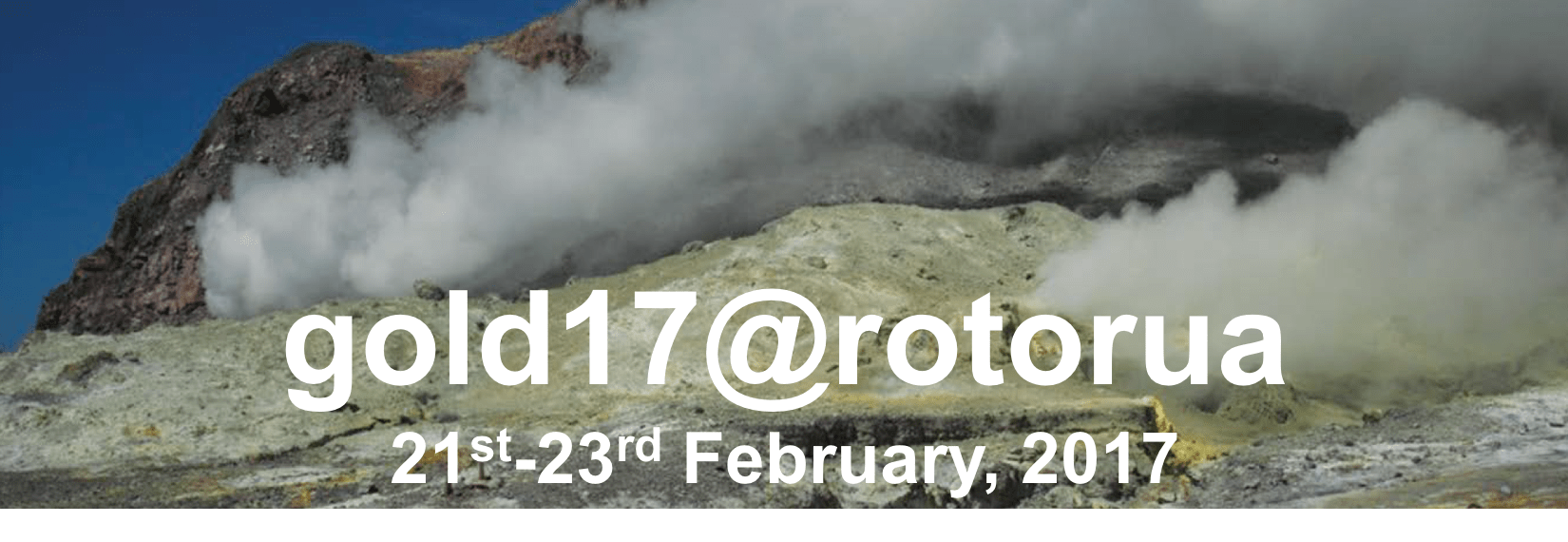
Gold17@Rotorua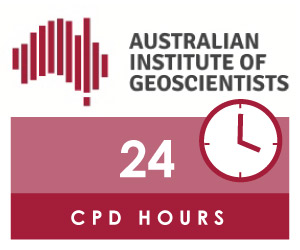 , New Zealand, is fast approaching! The conference will be held from 21st to 23rd February 2017. The meeting continues the regular series of gold events that commenced with Gold’82 in Zimbabwe and has continued since in southern Africa, Australia and the Americas.
, New Zealand, is fast approaching! The conference will be held from 21st to 23rd February 2017. The meeting continues the regular series of gold events that commenced with Gold’82 in Zimbabwe and has continued since in southern Africa, Australia and the Americas.
This is the first time the event has been held in New Zealand.
The latest conference brochure is available here. The brochure provides the latest information for the conference, pre- and post-conference field trips and workshops.
Watch the AIG Events Calendar for further updates as the conference date approaches.

The latest Australian Geoscientist Employment Survey is open for contributions until 22 October, 2016. Follow this link to complete the survey.
The June 2016 quarter Australian Geoscientist Employment Survey revealed that employment prospects for geoscientists throughout Australia were potentially showing signs of improvement.
At the end of June, the combined unemployed + underemployed rate was still over 36% – more than one in three geoscience professionals in Australia. Long-term unemployment and under-employment continued to be a burning issue.
There has been considerable, anecdotal evidence that employment prospects for geoscientists in Australia may have improved during the third quarter of 2016. This survey will measure the extent to which has occurred.
Thanks to your support, this survey series is becoming regarded as an important indicator of not only geoscientist employment but the general health of the exploration and mining sectors in Australia. The survey results are reported widely and used to promote and inform others of the health of an industry which is vital to Australia’s economy. Please support this ongoing initiative by taking a few minutes to complete this latest instalment in the survey series and encouraging your friends and colleagues to do so.
You do not need to be an AIG member to participate.
Please note that no data that could personally identify respondents is collected by this survey.
The few minutes of your time spent completing the survey really helps to make a difference to the standing and knowledge of our profession. Again, the survey will remain open for contributions until 22 October 2016. Click here to complete the survey.
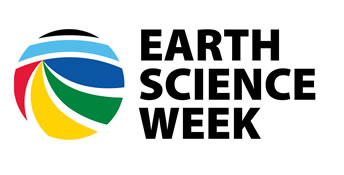
Getting involved is simple and fun:
Australians of all ages have the opportunity to join in an innovative social media project to record and promote Australia?s vast geological heritage.
The Australian Geoscience Council?s (AGC) #OzRockStocktake is being launched as part of Earth Science Week, which starts this Sunday 9 October and runs until Saturday 15 October.
Earth Science Week is an international event, held each year. This year?s theme is ?Our Shared Geoheritage?.
“During Earth Science Week — and beyond — Australians are being urged to post a photo on Facebook and/or Twitter of their favourite rocks, outcrops, mountains or geological landscapes, with the hashtag #OzRockStocktake and a short description of where the photo was taken” AGC President, Dr Bill Shaw, said.
“We would also love to see photos posted of stone-based monuments, structures with stone features (like the Sydney Harbour Bridge), stone buildings, iconic geological sites like The Three Sisters in the Blue Mountains, dinosaur bones, other fossils and even meteorites. These all show our vast geological heritage and our fascination with the rocks that are the foundation of everything we are and do.
“We encourage everyone to get involved in this ultimate Aussie rock tour and geological census, whether it be posting a photo online or even just visiting the #OzRockStocktake pages to see what?s there.
“Through the power of social media, we hope to capture a significant collection of images that show the magnitude of our geological heritage, and the many areas of Australia in which it is found.
“It is entirely possible that some of the posts in the #OzRockStocktake might even uncover new geological features or geoheritage sites that we never knew existed, or have forgotten.
“Quite apart from informing us of unique geological features across Australia, we also want this project to demonstrate the many ways in which geoscience and geoscientists contribute to society.
“For example, our mountain ranges, rocks and soil-types determine where our water comes from, how successful particular agricultural exploits will be, our huge natural resources that underpin the high standard of living we enjoy in Australia, and our unique landscape.
Australia’s geoscientists who work across many fields. While their work in the resources sector exploring for minerals and energy resources may be the first thigs that come to mind, geoscientists also contribute in many other areas, like ensuring our GPS navigation systems align with the continuing movement of our continent, earthquake monitoring and tsunami warnings, deep ocean research, soil science for agriculture, investigating sites for major engineering projects, groundwater resource management and integrating data to understand climate change using their unique and deep understanding of our planet’s dynamic, interlinked natural systems.
“Geoscientists understand and monitor geohazards to ensure the tunnels you travel through and buildings you are in have solid geological foundations Dr Shaw said. They discover and help develop the minerals we all use, including those in your smartphone, bicycle and car, and those that will enable the capture, storage and transmission of sustainable energy resources.
“Geoscience is one of the great four scientific disciplines alongside chemistry, physics and biology, and our geoscientists make a crucial contribution to Australia and to all Australians.”
#OzRockStocktake provides an informative and fun way for everyone to join in this work.
For more information about other Earth Science week activities in Australia visit the Geoscience Australia website. The Australian Geoscience Council website also has information about specific events.
Information about Earth Science Week globally is available here. You can also follow @earthsciweek on Twitter or search for the #EarthSciWeek hashtag.
